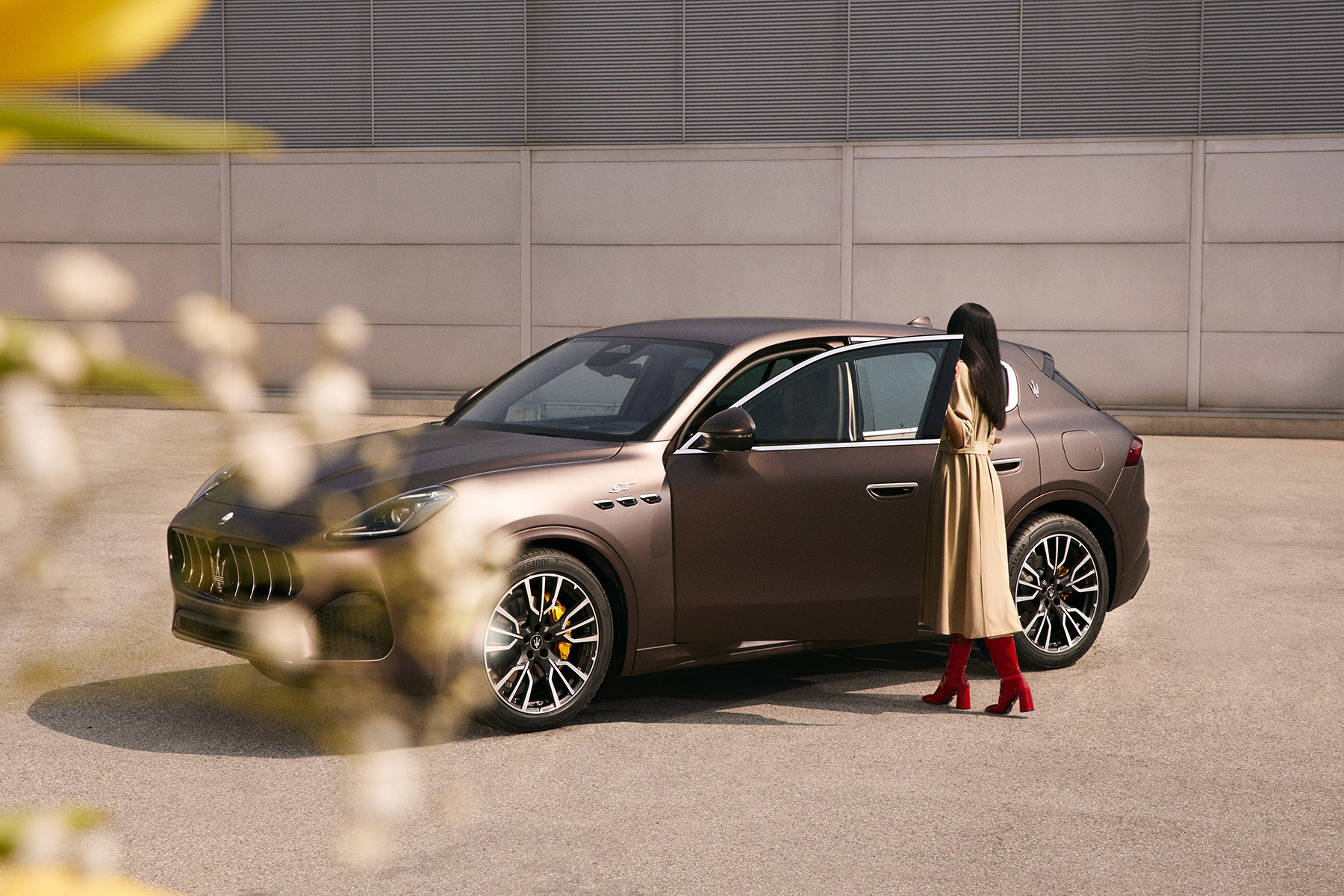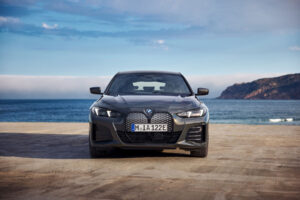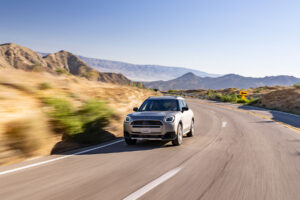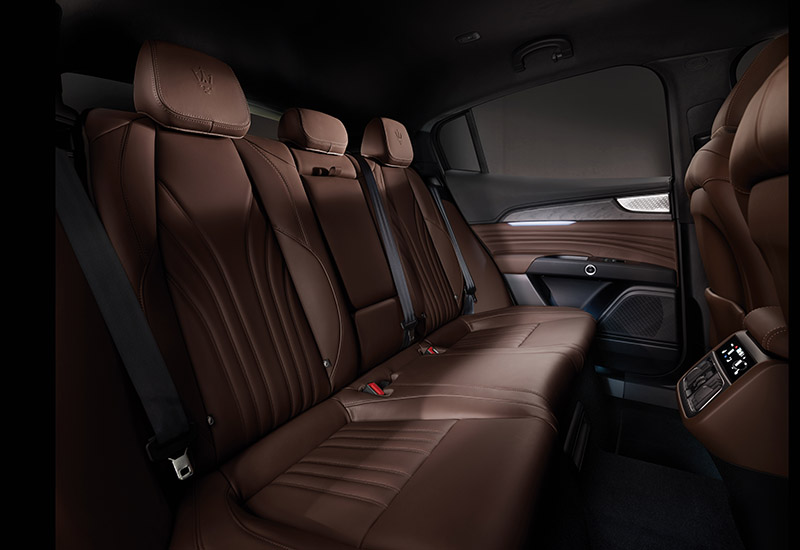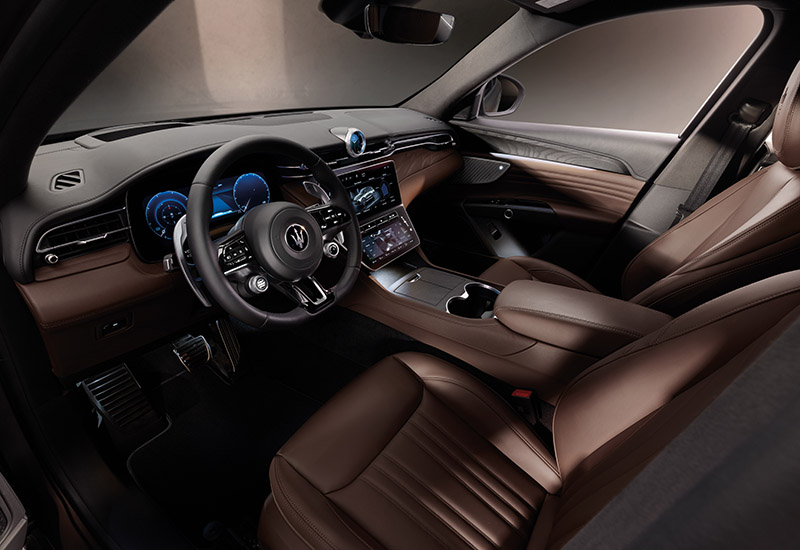So, how does a company like Maserati – known for racing and Grand Touring cars – reinvent itself in these challenging new times? Well, perhaps what an exotic sportscar company like it needs is a cash cow to ensure future funds for its next round of cars… Porsche did the same over 20 years ago with its own Cayenne.
That’s why Maserati went on a similar trajectory in 2016 with the Levante, a full-size SUV powered by a Ferrari-derived V6. Now, it offers the Grecale GT Hybrid SUV. Designed on the Giorgio platform – an automobile platform made by Fiat Chrysler Automobiles since 2015 debuting in the Alfa Romeo Giulia – the Grecale GT takes aim at competition like the popular Porsche Macan.
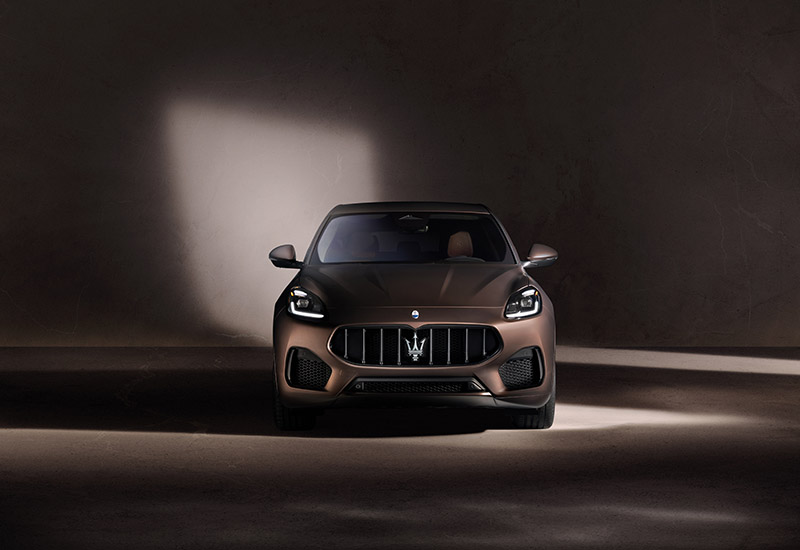
Key design cues of the Italian SUV include a front with a protruding nose and a wide grille, the latter featuring chrome vertical bars. There’s also a gently sloping roofline, recessed door handles and the brand’s signature triple vents on the front fenders and trident emblems on the C-pillars.
The rear sports slim, two-piece taillights, while the lower apron gets a diffuser element flanked by the exhaust outlets. The slim headlights and familiar Maserati grille exude an eager, sporty look that makes the car look more compact than it is.
In Malaysia, Naza Italia now offers the Maserati Grecale GT for RM598,000, inclusive of local duties and taxes but excludes on-the-road fees, insurance or any options. It’s powered by a 2.0 litre turbocharged petrol engine serving up 300 PS at 5,750 rpm and 450 Nm of torque from 2,000 to 4,000 rpm. There’s also a 48-volt mild hybrid system that includes a belt starter generator (BSG), a battery, an eBooster as well as a DC/DC converter.
The BSG charges the car’s battery in the boot. This, in turn, powers the eBooster electric compressor to fill in the torque gaps before the turbo spools up. Paired with an eight-speed auto transmission and all-wheel drive, this allows for a 0-100 km/h time of 5.6 seconds and a top speed of 240 km/h. This is an engine you might never have expected to see in a Maserati! It’s the same GME T4 unit used in the Alfa Romeo Stelvio (and also in the current Jeep Wrangler).
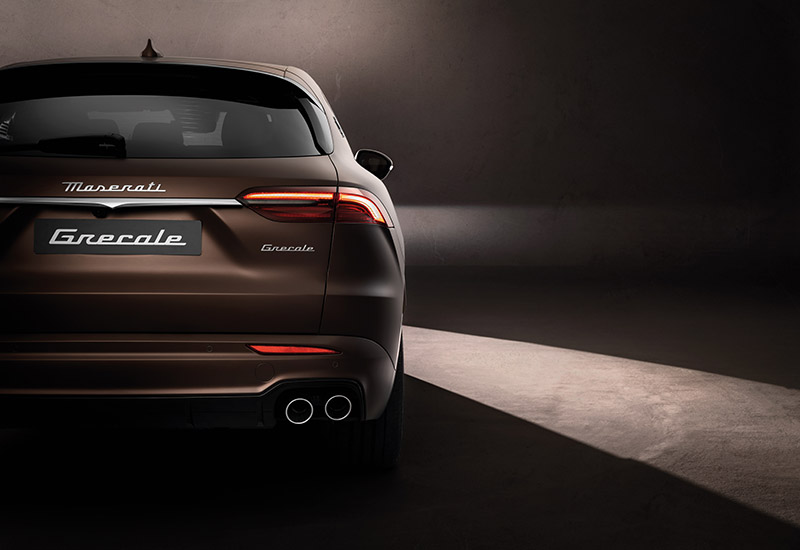
Meanwhile, the car’s Vehicle Dynamic Control Module (VDCM) controls all vehicle dynamics with precise targets and timing for all the major actuators, reducing intervention times while also increasing performance, driving pleasure and safety.
Step inside, and there are plenty of Maserati signatures present, from the metal, over-size gear shift paddles and steering wheel-mounted start button, to the dashboard-mounted clock (albeit now with a digital screen instead of analogue hands).
A 12.3-inch digital instrument cluster and a 12.3-inch central touchscreen command attention, the latter sitting just above another 8.8-inch touchscreen. The stacked displays are linked to the Maserati Intelligent Assistant (MIA), which is the company’s latest infotainment system built on Google’s Android Auto OS.
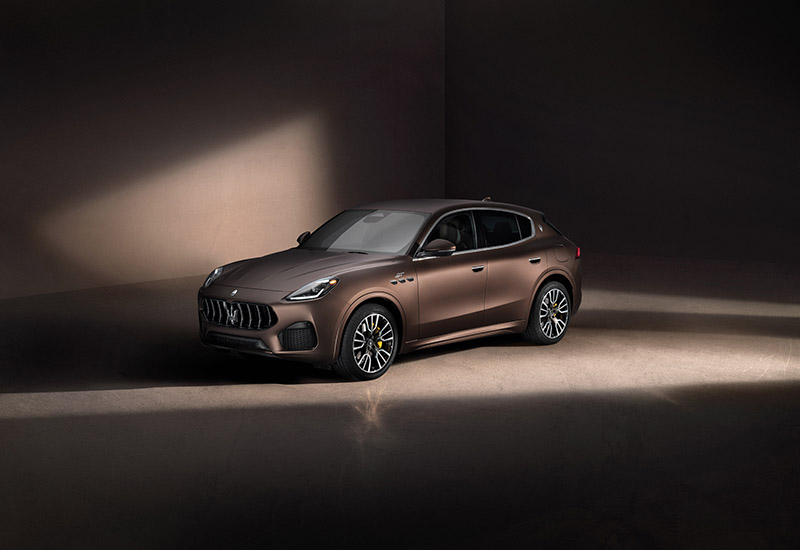
Rear passengers also get their own touchscreen nestled in the rear centre console, allowing them to adjust climate settings, with three-zone climate control as standard. There’s also a sound system developed for Maserati by fellow Italian brand Sonus Faber on board.
Of course, there’s no shortage of options when it comes to personalisation, and this includes exterior colours headlined by the hero Bronzo Opaco colour – a shade of bronze with an out-of-this-world matte and silky finish.




